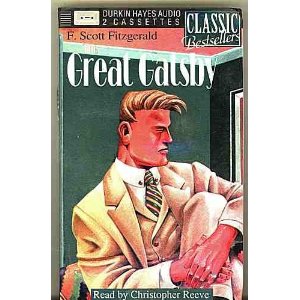| Performance Indicators:
P.S ELA-2 Reading Analysis: Cite strong and thorough textual evidence to support analysis of what the text says explicitly as well as inferences drawn from the text, including determining where the text leaves matters uncertain. A. Evaluate the relevant themes and synthesize how they are present in the novel in oral and written responses. P.S ELA-3 Reading Craft and Structure: Determine an author’s point of view or purpose in a text in which the rhetoric is particularly effective, analyzing how style and content contribute to the power, persuasiveness or beauty of a text. A. Understand SOAPSTone: Speaker, Occasion, Audience, Purpose, Subject, Tone |
The Great Gatsby Study Guide and Audiobook
Chapter 6 Part 1
Chapter 6 Part 2
Chapter 6 Part 3
Nick reveals Gatsby’s true history, in an attempt to explore “those first wild rumors about his antecedents, which weren’t even faintly true” (107). In reality, Jay Gatsby is James Gatz, son of unsuccessful farmers from the Midwest. In a chance encounter with Dan Cody — a fifty-year-old ex-millionaire — on Lake Superior, however, young Gatz had introduced himself as Gatsby. Thus, the ambitious Gatz birthed a new-found persona, “just the sort of Jay Gatsby that a seventeen-year-old boy would be likely to invent, and to this conception, he was faithful to the end” (104).
After Nick’s revelations, he relaxes at Gatsby’s one summer afternoon when somebody brings Tom Buchanan in for a drink. Gatsby becomes increasingly confident in his interaction with Tom — who remains oblivious to Gatsby’s continued affair with Daisy — even inviting him to stay for dinner. Although he refuses, Tom does accompany his wife to Gatsby’s party that weekend. By the end of the awkward evening, Tom demands to know who Gatsby is and what he does, vowing ominously to “make a point of finding out” (115).
Nick lingers with his neighbor after Tom and Daisy leave, and discerns that Gatsby “wanted nothing less of Daisy than that she should go to Tom and say: ‘I never loved you'” (116). After destroying her past with Tom with that statement, Daisy would then marry Gatsby in Louisville, “just as if it were five years ago” (116). Gatsby, essentially, wishes to obliterate and re-write the past, and truly believes that he can, determining to “fix everything just the way it was before” (117).

